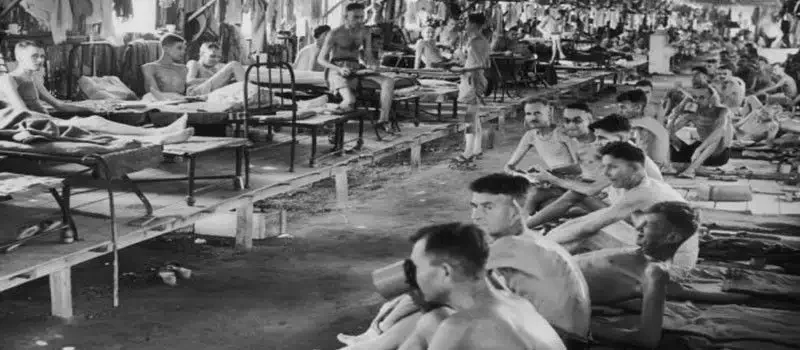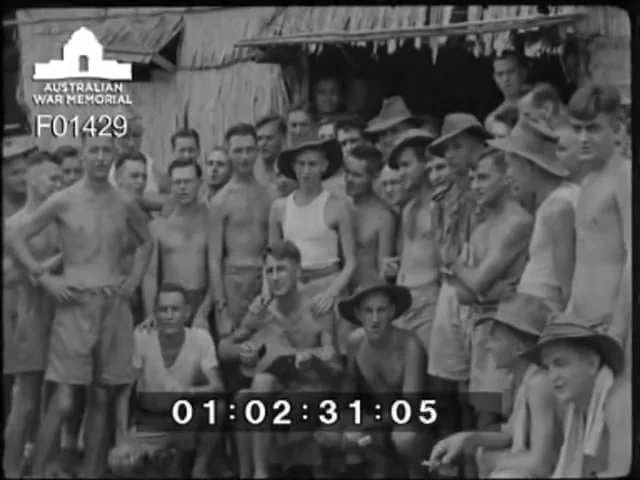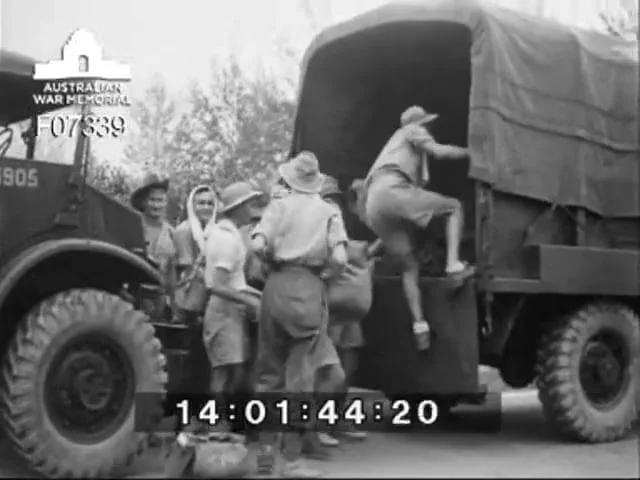- Military History
- Prisons, Prisoners & Camps
- POW Camps
- Changi, Japanese POW camp in Singapore (1942)

Changi, Japanese POW camp in Singapore (1942) A Prison-camp complex opened by the Japanese during World War II
A large prison-camp complex opened by the Japanese during World War II to house POWs captured in Singapore, Changi was set on nearly 16 square kilometers of undulating hills at the eastern end of Singapore.
After the island's fall on 15 February 1942, over 15,000 Australian and 35,000 British prisoners were herded into Changi Prison, formerly the magnificent Selarang Barracks and, lately, home to the Gordon Highlanders, a Scottish regiment. Now Changi was supposedly a hospital center, but in fact, it served as a massive POW camp. The barracks were badly damaged by shelling.
As more and more prisoners filed into Changi, overcrowding became an ongoing problem. Within two months, 8,000 prisoners were without shelter. There was no water, lighting, or sewage facilities and clouds of flies were a constant annoyance. Food stores rapidly diminished, and the men were placed on strict rations.
There was only a nominal Japanese presence inside the vast compound, the guards mostly staying outside the confines of the camp. Changi's administrative staff had warned the prisoners that, apart from a rice ration, they had to be self-supporting, so the prisoners were placed under the management of their own senior officers. The officers encouraged the men to clear drains to prevent the breeding of malaria-bearing mosquitoes, and they supervised efforts to dig latrines, scrounge for food, and get wood for cooking fires.
Army engineers repaired the shattered plumbing and restore electricity. Lieutenant-Colonel Glyn White of the Australian Army Medical Corps smuggled in hospital equipment, drugs, and medicines, and soon the camp was functioning reasonably well. Gardens provided fresh food, and eventually 10 truckloads of green vegetables were being harvested every week. A poultry farm was established as well and fresh eggs were distributed under the direction of doctors.
With the camp running smoothly, the men looked for other diversions. They attended lectures on a variety of subjects, studying such things as history, geography, engineering, and business. An Australian concert party was formed, and well-attended shows (which continued until July 1945) gave the men some relief from the boredom and uncertainty of prison life. During one early show, an Australian comedian named Harry Smith coined a melancholy slogan that will forever be associated with Changi: "You'll never get off the island!"
The Japanese soon began drawing on their prisoner population for local work parties, and over 8,000 men labored on tasks such as filling bomb craters and gathering scrap metal for export to Japan. In May 1942, around 3,000 prisoners known as A Force were taken out of Changi to work on the Burma-Thailand Railway. Two months later, a further 1,500 were shipped to Sandakan in British North Borneo to begin work on an airfield, while others went to labor camps in Japan. In August, the Japanese removed all the camp's senior officers above the rank of lieutenant-colonel and shipped them to Formosa.
As prisoner numbers dwindled, the entire camp, including the hospital, was moved to Selarang. Conditions there worsened dramatically and by war's end, Changi's POW’s were in a pitiful state, diseased, starved, their bodies reduced to skin and bone. Today the Selarang Barracks still stands, while Changi itself is now home to Singapore's huge, modern international airport.
- Singapore (Straits Settlements) 1826-1942
- Singapore (Japanese Occupation) 1942-45
- WWII (1939-1945)
- Pacific War (1941-1945)
Map
- {{#owner}}
- {{#url}} {{#avatarSrc}}
{{name}} {{/url}} {{^url}} {{#avatar}} {{& avatar}} {{/avatar}} {{name}} {{/url}} - {{/owner}} {{#created}}
- {{created}} {{/created}}

























